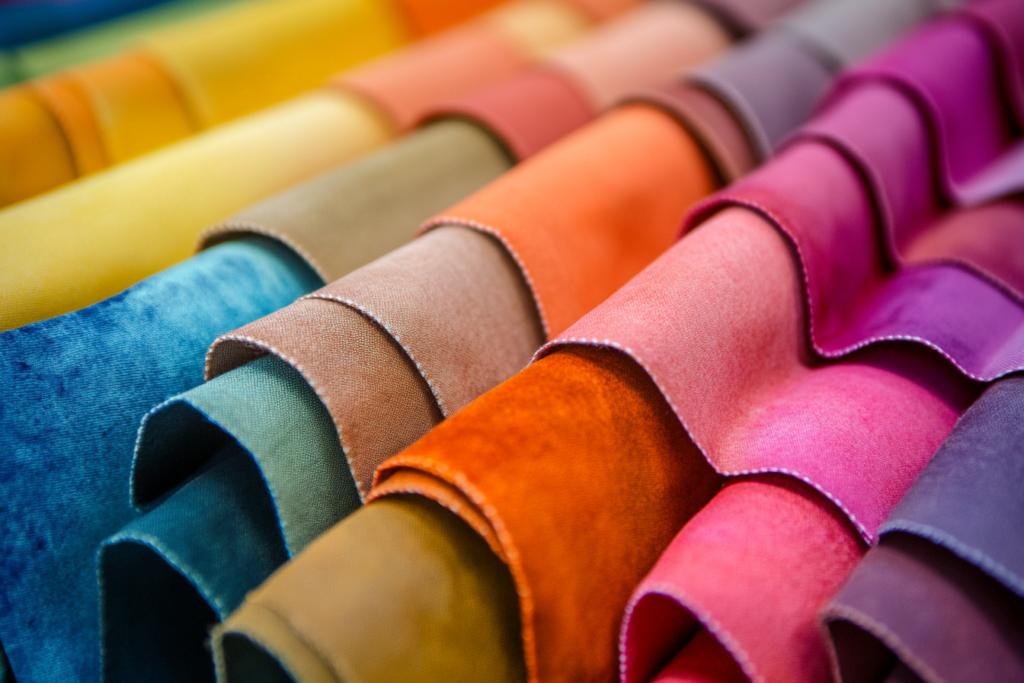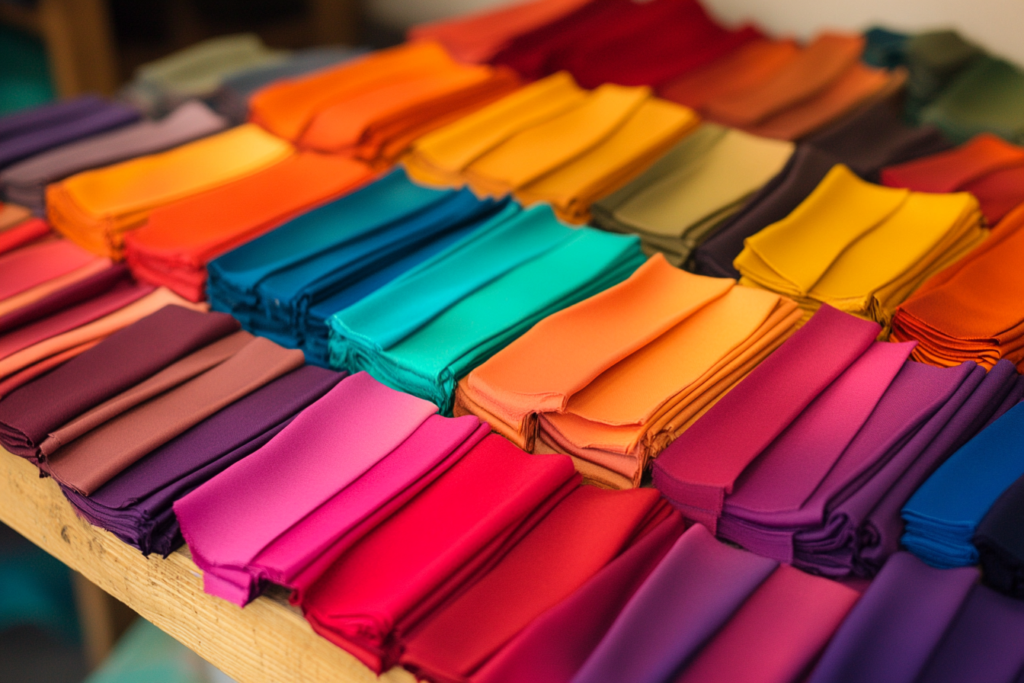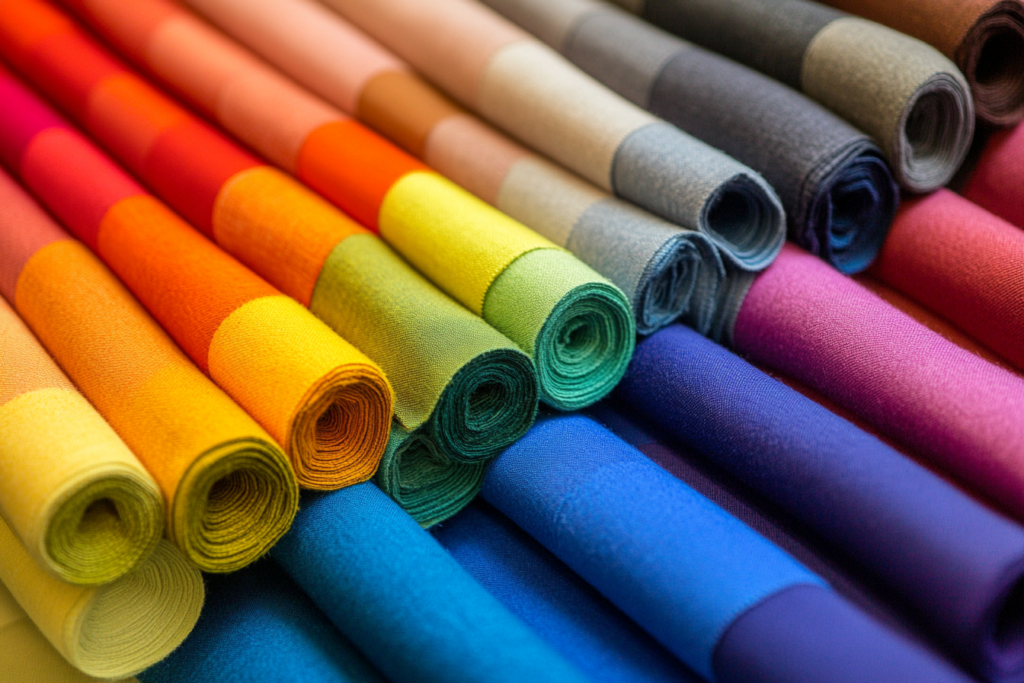Lab Dip: The Key to Perfect Color Matching in Textile Production
Meta Description: A lab dip is a small dyed fabric sample used to match a standard color chart, such as Pantone. Managed by a colorist, it ensures color accuracy before bulk production.
What is a Lab Dip?
A lab dip is a small swatch of dyed fabric created to match a specific color standard before full-scale fabric production begins. The lab dip is tested against color reference charts, such as Pantone, or a custom color swatch provided by the client. This process is managed by a colorist or dye technician, ensuring precise color accuracy and consistency.
Lab dips help fashion brands, textile manufacturers, and designers approve color shades before dyeing large fabric batches, reducing waste and production errors.


Key Features of a Lab Dip
✔ Small Dyed Fabric Sample – Typically a few inches in size, showing the intended fabric color.
✔ Matches Standard Color References – Compared against Pantone books, brand color guidelines, or physical swatches.
✔ Managed by Colorists – Experts adjust dye formulas to achieve the closest match.
✔ Approved Before Bulk Dyeing – Ensures color accuracy and consistency in mass production.
✔ Can Require Multiple Rounds – Adjustments may be needed to achieve the perfect match.
The Lab Dip Process: How It Works
1️⃣ Customer Provides a Color Standard
- A brand may specify a Pantone number, fabric swatch, or digital color reference.
2️⃣ Lab Dip Preparation
- The colorist mixes dye formulations and applies them to a small fabric sample.
3️⃣ Color Matching & Adjustment
- The dyed sample is compared to the original color standard under controlled lighting conditions.
- If the match is not precise, the dye formula is adjusted, and a new sample is created.
4️⃣ Approval Process
- The brand or designer reviews the lab dip and either approves or requests further refinements.
5️⃣ Bulk Dyeing Begins
- Once the lab dip is approved, the dye recipe is finalized for mass fabric production.
Types of Lab Dip Approvals
📌 Visual Approval – Color is checked under different lighting conditions (e.g., daylight, fluorescent, and LED).
📌 Spectrophotometer Matching – A digital color measurement tool ensures precision in color matching.
📌 Production Sample Approval – Some brands request an additional sample from the bulk dyeing process before full production continues.
Lab Dip vs. Other Color Matching Methods
| Feature | Lab Dip | Strike-Off | Shade Band |
|---|---|---|---|
| Purpose | Matches dye color to standard | Tests print color accuracy | Ensures color consistency within a batch |
| Used For | Solid-colored fabrics | Printed fabrics | Large-scale fabric dyeing |
| Approval Stage | Before bulk dyeing | Before full-scale printing | During production to check uniformity |
While lab dips are for solid colors, strike-offs test printed fabrics, and shade bands ensure color consistency in large production runs.
Why Are Lab Dips Important in Fashion Production?
📌 Prevents Color Discrepancies – Ensures fabric matches brand identity and product expectations.
📌 Reduces Waste & Re-Dyeing Costs – Avoids expensive production mistakes.
📌 Improves Color Consistency Across Batches – Ensures uniformity across multiple fabric rolls.
📌 Saves Time in the Approval Process – Allows faster production with fewer corrections.
📌 Meets Brand & Retailer Requirements – Ensures strict color accuracy for retail displays and collections.
Common Industries That Use Lab Dips
✔ Fashion & Apparel – Used to match brand colors for clothing collections.
✔ Home Textiles – Ensures curtains, bedding, and upholstery match interior designs.
✔ Footwear & Accessories – Helps maintain color uniformity in shoes, handbags, and leather goods.
✔ Activewear & Sportswear – Ensures performance fabrics match brand color schemes.
✔ Luxury & High-End Fashion – Guarantees precise dye formulas for premium collections.
How to Ensure a Successful Lab Dip Process
🖤 Provide an Accurate Color Reference → A Pantone color, fabric swatch, or digital sample improves accuracy.
🖤 Review Lab Dips Under Different Lighting → Colors may appear different in daylight, office lighting, or store displays.
🖤 Use a Spectrophotometer for Precision → Helps reduce human error in color matching.
🖤 Factor in Fabric Type & Texture → Color absorbs differently on cotton, silk, polyester, or blends.
🖤 Request Multiple Shade Options → Some brands prefer slight variations (e.g., lighter, darker) to select the best match.
Why Lab Dips Are Essential for Quality Control
✔ Ensures Color Consistency Across Production Runs
✔ Eliminates Unwanted Dye Variations
✔ Speeds Up Bulk Fabric Approval Process
✔ Reduces Costly Production Mistakes
✔ Enhances Brand Identity & Consumer Trust
Conclusion: The Role of Lab Dips in Textile Manufacturing
Lab dips play a critical role in ensuring fabric color accuracy, providing brands and manufacturers with a reliable way to match and approve dye shades before large-scale production.
By allowing for adjustments and precision in the early stages, lab dips help maintain brand consistency, reduce waste, and improve overall product quality in fashion and textile manufacturing.



